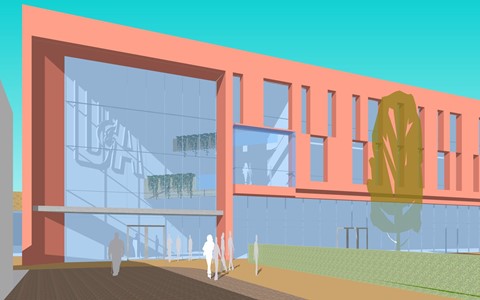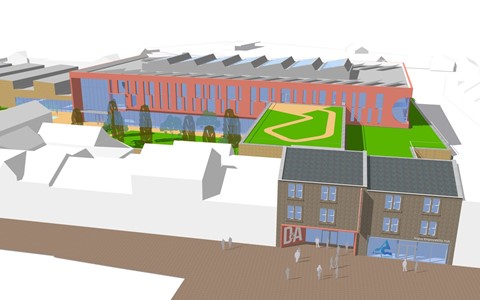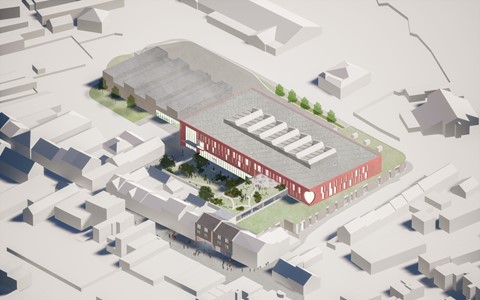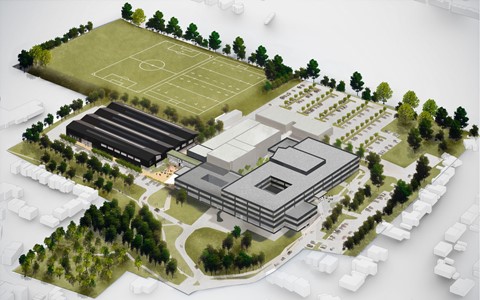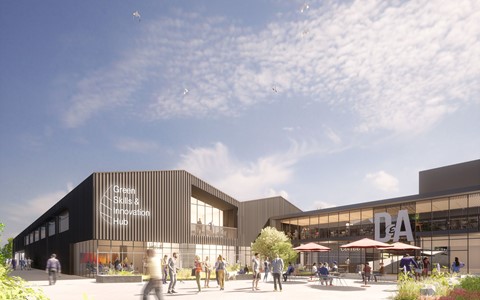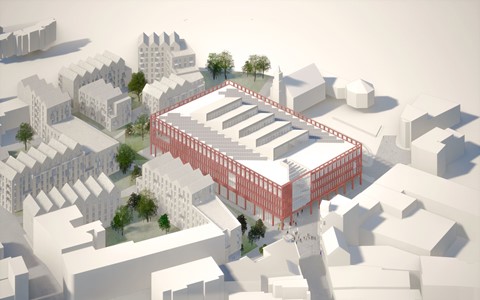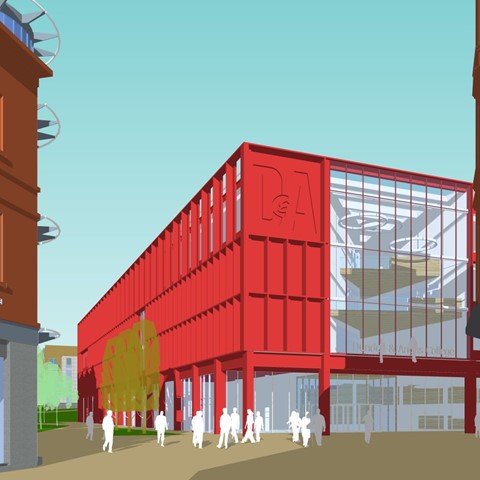Huge economic impact of Dundee & Angus College’s campus vision revealed
Dundee and Angus College’ ambitious plan to create new campuses and integrated employability services in the centres of Dundee and Arbroath could generate £1.8 billion for the region.
The College plans to help drive economic growth and regeneration in the heart of both Dundee and Angus as part of a 10-year vision for a dynamic new way of providing learning, skills, support and advice in the region.
Working with a range of local and national partners, the College hopes to develop a collaborative model that would bring education, employability services and support together under one roof for the first time in Scotland.
A new report by the respected consultants BiGGAR Economics into the impact of the plans have shown that there would be a 30% return on the initial investment of £265 million in the project with £10 worth of benefit for every £1 spent.
Overall, during the construction period and the first 20 years of operation, £1.8 billion worth of benefits will be enjoyed by the region at today’s prices.
Simon Hewitt, Principal of Dundee and Angus College, said: “We always knew this project would have the potential to transform the region, but these figures go beyond our expectations.
“It is hard to think of much that could deliver almost £2 billion worth of benefit, let alone such a straightforward concept of delivering employability services with life-long learning and education in the centre of our communities.
“As well as the total economic impact, BiGGAR have identified a range of other benefits to the region which makes you realise why so many people and organisations have welcomed our vision and are keen to back the plans or to collaborate.”
The range of benefits identified by BiGGAR include:
- Improved employment rates
- Savings on utility costs
- Human capital benefits
- Regeneration effects through relocation and community engagement
- Environmental benefits.
One of the key drivers of the College’s vision is to co-create a more seamless employability service which would lead to higher course completion rates, greater onward employment for students and increased regional employment.
The transformative and innovative approach to providing employability services would include advice, support and training from a range of public sector bodies being delivered on an integrated basis. This would involve bringing together a partnership of agencies to deliver help and advice to individuals in the same environment as potential training and upskilling opportunities.
A mid-range regional employment target of +3.5%in Dundee and +1% in Angus would equate to and extra 3379 people in Dundee and 681 people in Angus in employment. Hitting double that target would result in an extra 6,755 people in Dundee and 1,362 in Angus in work.
Mr Hewitt added: “We have always seen delivering a new model for providing employability services alongside high-quality educational provision as absolutely central to what we need to do. These figures show an incredible return on investment.”
The College proposals have attracted significant local support from the business and civic communities.
Chris Martin from digital product specialists, Waracle, said: ““The College plans are perfectly placed to breathe much needed economic life into Dundee and Arbroath. This economic impact assessment report demonstrates the level of value both communities could expect from it and I’m delighted to support the vision.”
Entrepreneur and games developer David Hamilton said: “I think this goes to show how vital this project is for the city and Arbroath. Dundee and Angus College is crucial for the region and the campus vision is a no-brainer. It would kick start a regeneration in the centre of both and, as a former student, I’m particularly delighted to be able to support the College and its bold ambition.”
Alongside the employment potential of the project, there would also be significant impact on human capital through increased wages, social value and improved well-being of students and staff. This alone has been quantified as being worth £130million to the community over 20 years through improved qualifications and job prospects, satisfaction and wages.
During the building phase of the project, the proposed redevelopment of the Wellgate, Abbeygate and Gardyne Campus will generate wealth in the construction industry and its supply chain in the form of increased value and jobs. BiGGAR estimate this to be worth £138million over the course of a three-year development period including demolition income and potential development of vacated sites.
Alongside the construction benefits, there would also be significant regeneration impacts to the city and town centre areas being redeveloped. This would come from increased activity and footfall from students, staff and visitors to the new campuses and the use of local amenities. This would make the areas more attractive for investment from other organisations and as locations for other businesses.
Better community engagement would come from the new sites with access for local people to student-led services like hairdressing, café bar, the training restaurant and beauty salon. The overall increase in footfall and, therefore, local engagement, would be 600-800 people a day in Dundee and 400-600 in Arbroath.
The new campus developments would allow Dundee & Angus College to reach its net zero targets by reducing total emissions. Each new campus will be more accessible on foot or public transport which would reduce the impact of staff and students commuting by car. The Wellgate site is close to the Green Travel Hub planned for the Bell Street multi-storey car park which will complement a series of active freeways to support travel into and around the city, including past Gardyne campus. Angus Council is currently working on active travel corridors through the town which will pass the preferred campus location at the Abbeygate.
Mr Hewitt said: “When the benefits are listed out, they are quite compelling. Even with relatively modest assumptions, the positive impact of the plans for our region is overwhelmingly positive. We want to give our students the best possible experience we can and, with it, the best possible chance of a better life in an improving community.”
The final funding package for the vision project has yet to be agreed but the College has begun talks with both the Scottish and UK governments on a range of options. At least two private investment vehicles have agreed in principle to fund the plans. It is also anticipated that the new campuses will incorporate design and build features which will contribute to the Scottish Government’s net zero ambitions.
